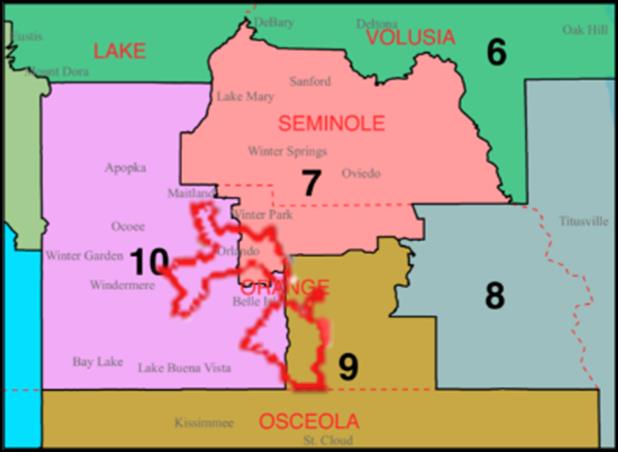On Monday, the U.S. Census Bureau announced the number of seats each state will have in the U.S. House of Representatives for the next decade. This reapportionment is based on population shifts revealed by the 2020 census and, on their face, those shifts seem to favor Democrats. One might assume that residents relocating from deep-blue states like California, New York and Illinois to red states like Texas, Florida and North Carolina would dilute Republican power in the latter (you may have even seen the “Don’t New York My Florida” t-shirts, mugs and bumper stickers alluding to this notion.)
The problem is that, in all three of those states, the Republican-controlled legislature runs the redistricting process that, by necessity, follows reapportionment. So, although the net gain of four House seats in Florida, North Carolina and Texas may be the result of an influx of Democrat voters, Republican state lawmakers can negate those potential voter gains through gerrymandering. Gerrymandering, in short, involves drawing congressional districts in such a way that one party or the other is virtually guaranteed to win in every election.
One outrageous example is Austin, Texas, a deep-blue city that is divided among six districts so as to dilute the Democrat voting population. Small parts of the city have been drawn into five massive districts that stretch far outside the city into rural areas with more conservative voters. The sixth district is a “gimme” to Democrats, a slender corridor encompassing swaths of inner-city Austin and San Antonio, drawn by Republicans to minimize the number of Democratic districts in the state.
Another example closer to home is the Congressional district apportionment in metro Orlando. The city (outlined in red in the accompanying graphic) is divided between the 7th, 9th and 10th districts. A portion of the border between the 7th and 10th districts bisects downtown Orlando from north to south just west of Lake Eola. All three districts were reliably Republican for several decades before flipping blue in 2013 (9th district) and 2017 (7th and 10th districts). These districts will be redrawn by the Republican-controlled Florida legislature ahead of the 2022 midterm elections to favor Republican candidates.

This is yet another reminder that local elections help decide national ones, and it’s critically important for Democrats to win up and down the ballot. Voting Democrat for governor or president is not enough. State GOP lawmakers have repeatedly shown their willingness to break rules and strain the bounds of credulity to stay in power. The only way to break those strangleholds is to increase Democratic representation in red-state legislatures.
A race left blank is a vote for the other side. Democrats must vote the whole ballot.
